Abstract
Escherichia coli cells are shown to be attracted to the l-amino acids alanine, asparagine, aspartate, cysteine, glutamate, glycine, methionine, serine, and threonine, but not to arginine, cystine, glutamine, histidine, isoleucine, leucine, lysine, phenylalanine, tryptophan, tyrosine, or valine. Bacteria grown in a proline-containing medium were, in addition, attracted to proline. Chemotaxis toward amino acids is shown to be mediated by at least two detection systems, the aspartate and serine chemoreceptors. The aspartate chemoreceptor was nonfunctional in the aspartate taxis mutant, which showed virtually no chemotaxis toward aspartate, glutamate, or methionine, and reduced taxis toward alanine, asparagine, cysteine, glycine, and serine. The serine chemoreceptor was nonfunctional in the serine taxis mutant, which was defective in taxis toward alanine, asparagine, cysteine, glycine, and serine, and which showed no chemotaxis toward threonine. Additional data concerning the specificities of the amino acid chemoreceptors with regard to amino acid analogues are also presented. Finally, two essentially nonoxidizable amino acid analogues, α-aminoisobutyrate and α-methylaspartate, are shown to be attractants for E. coli, demonstrating that extensive metabolism of attractants is not required for amino acid taxis.
Full text
PDF
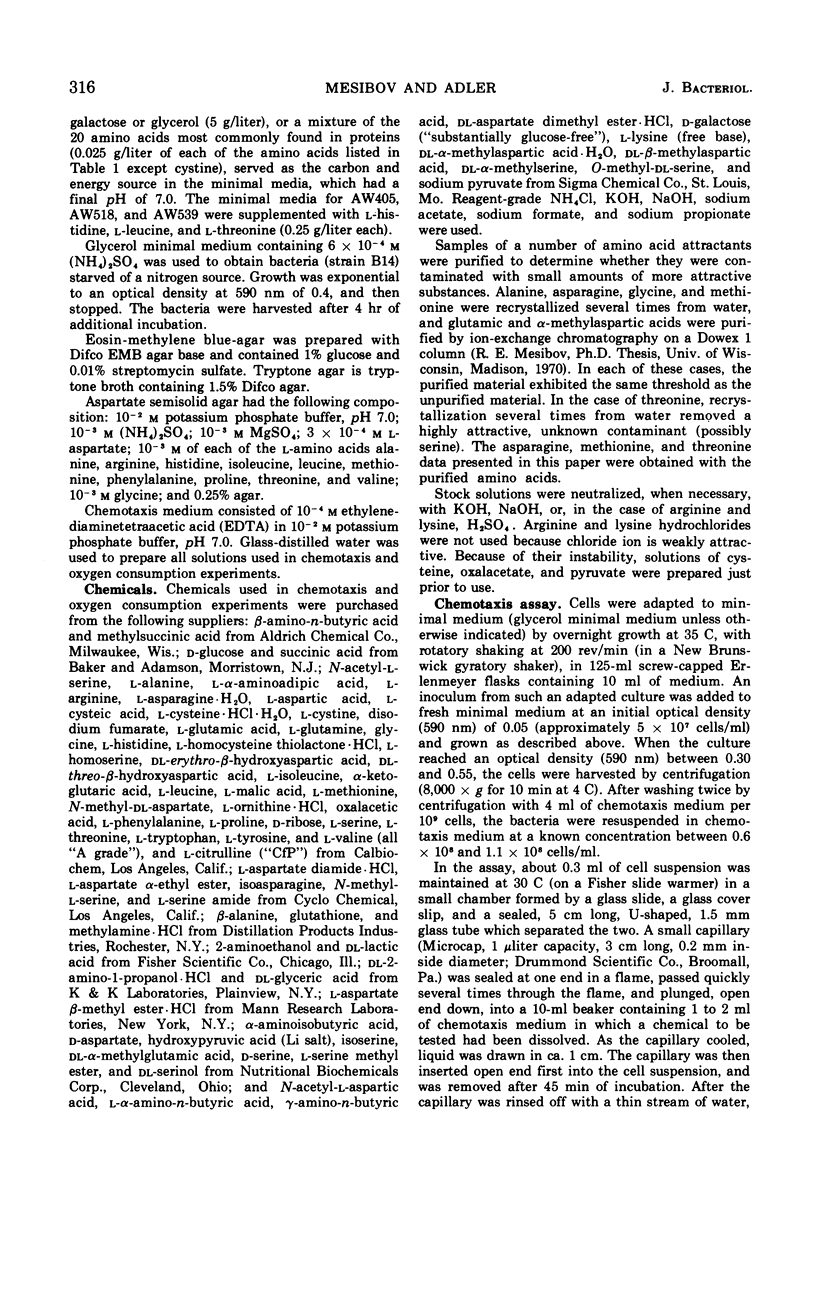
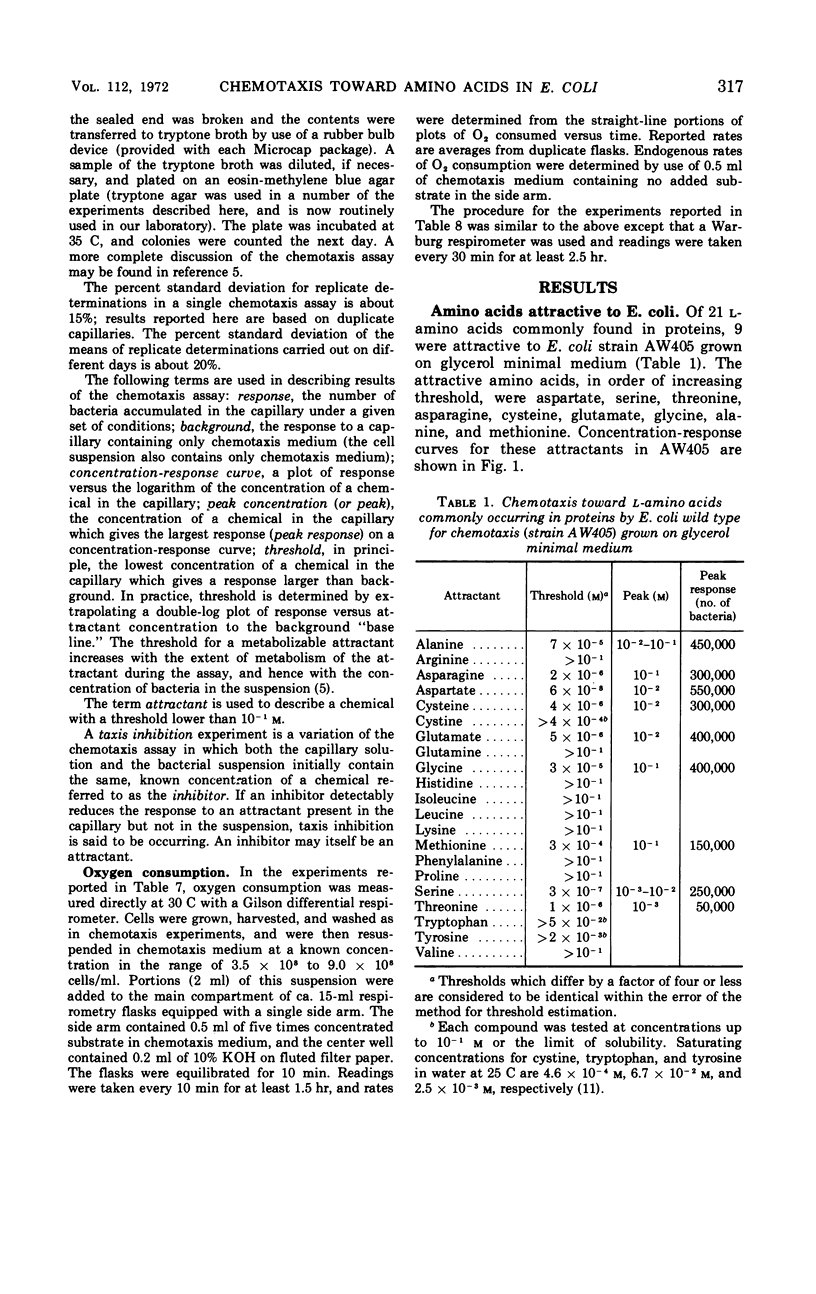
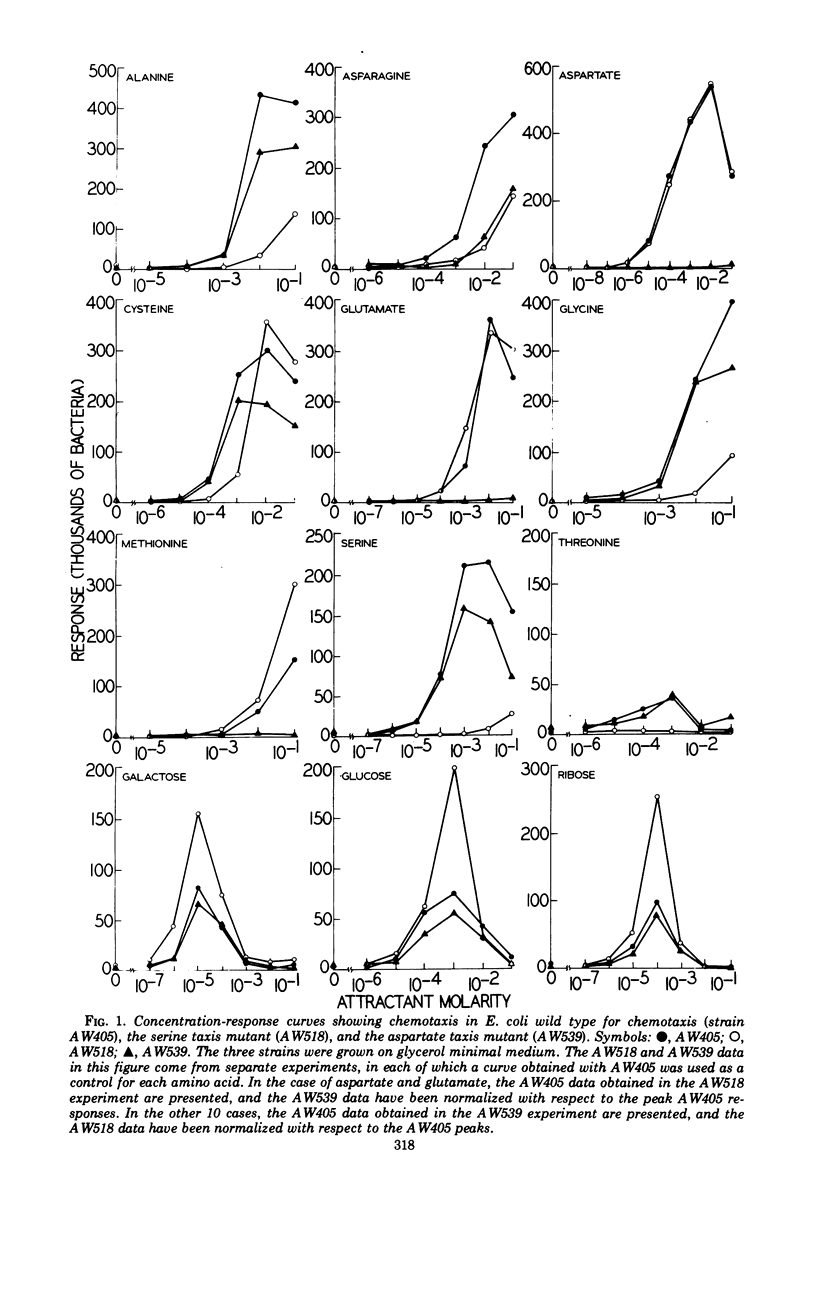
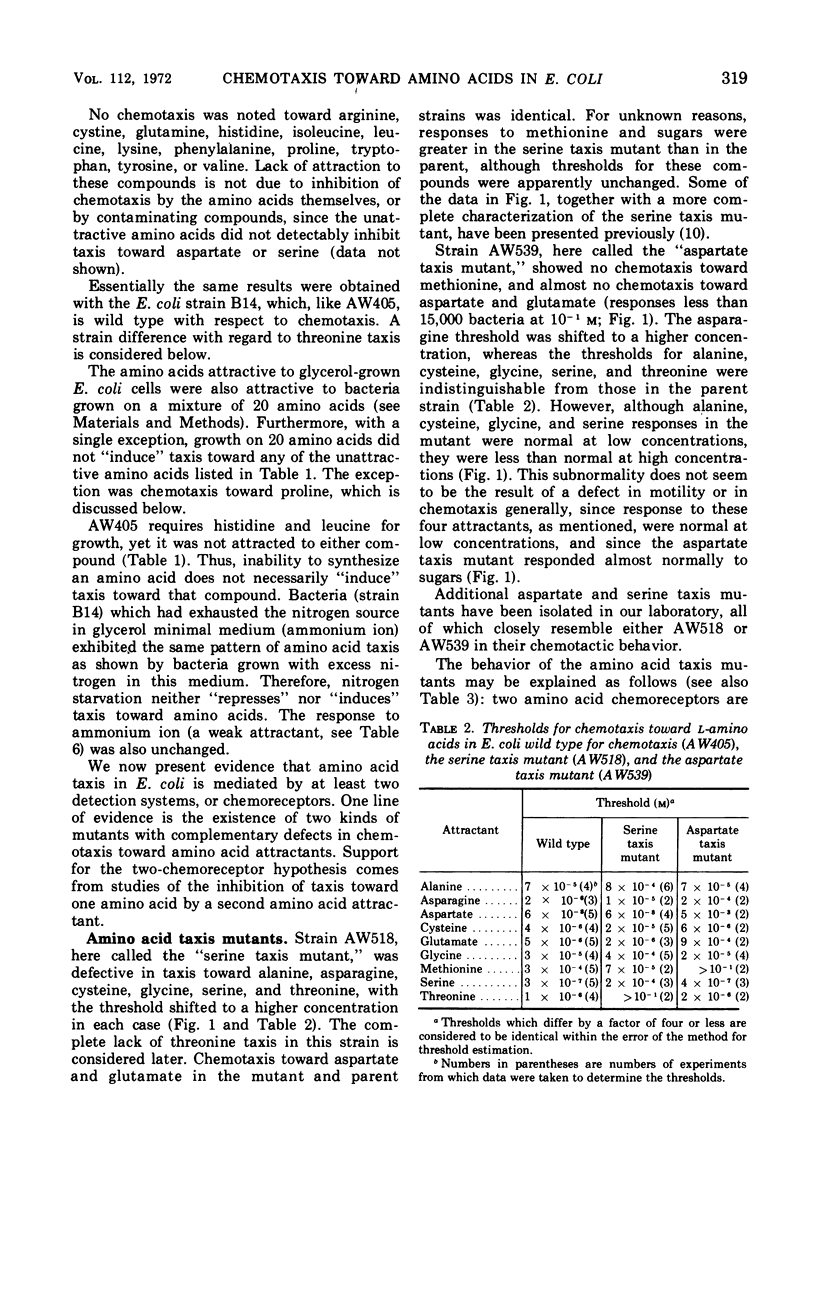
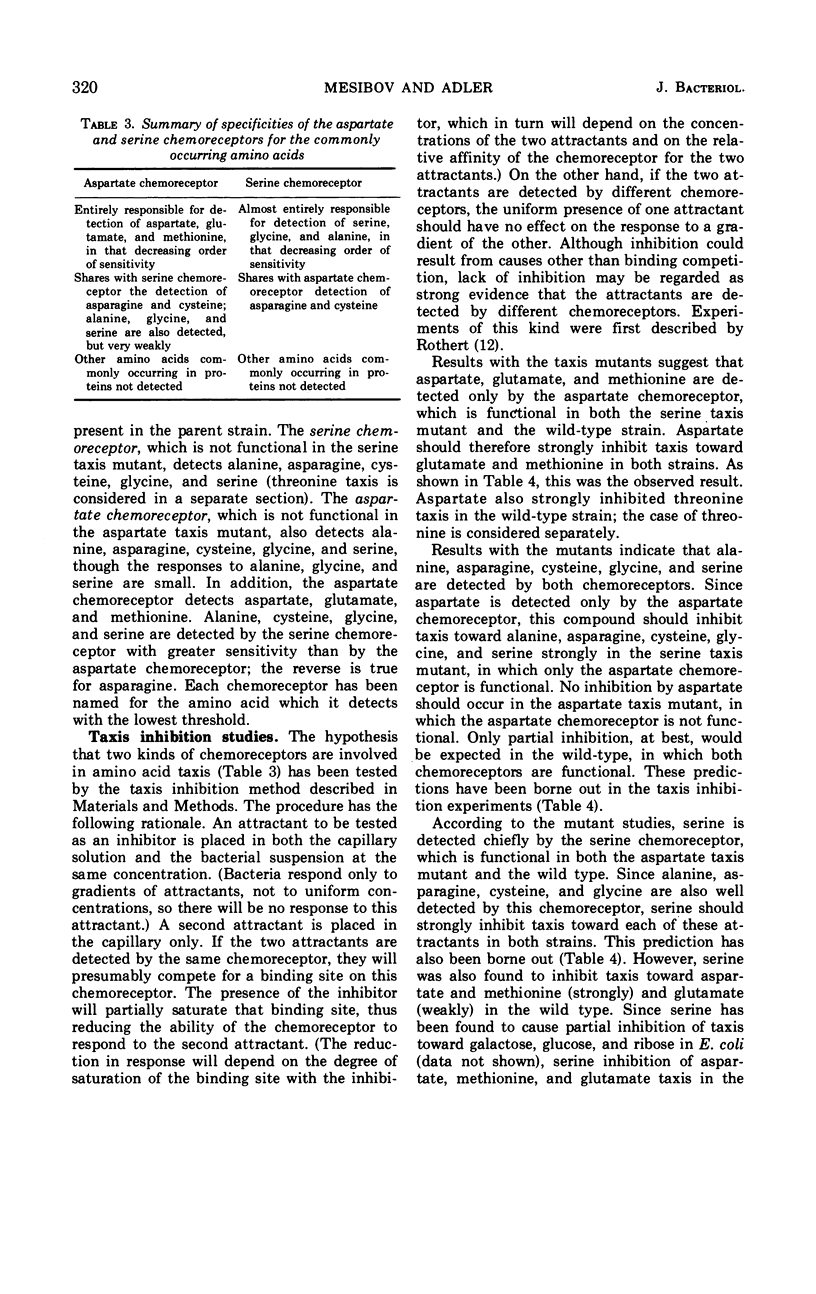
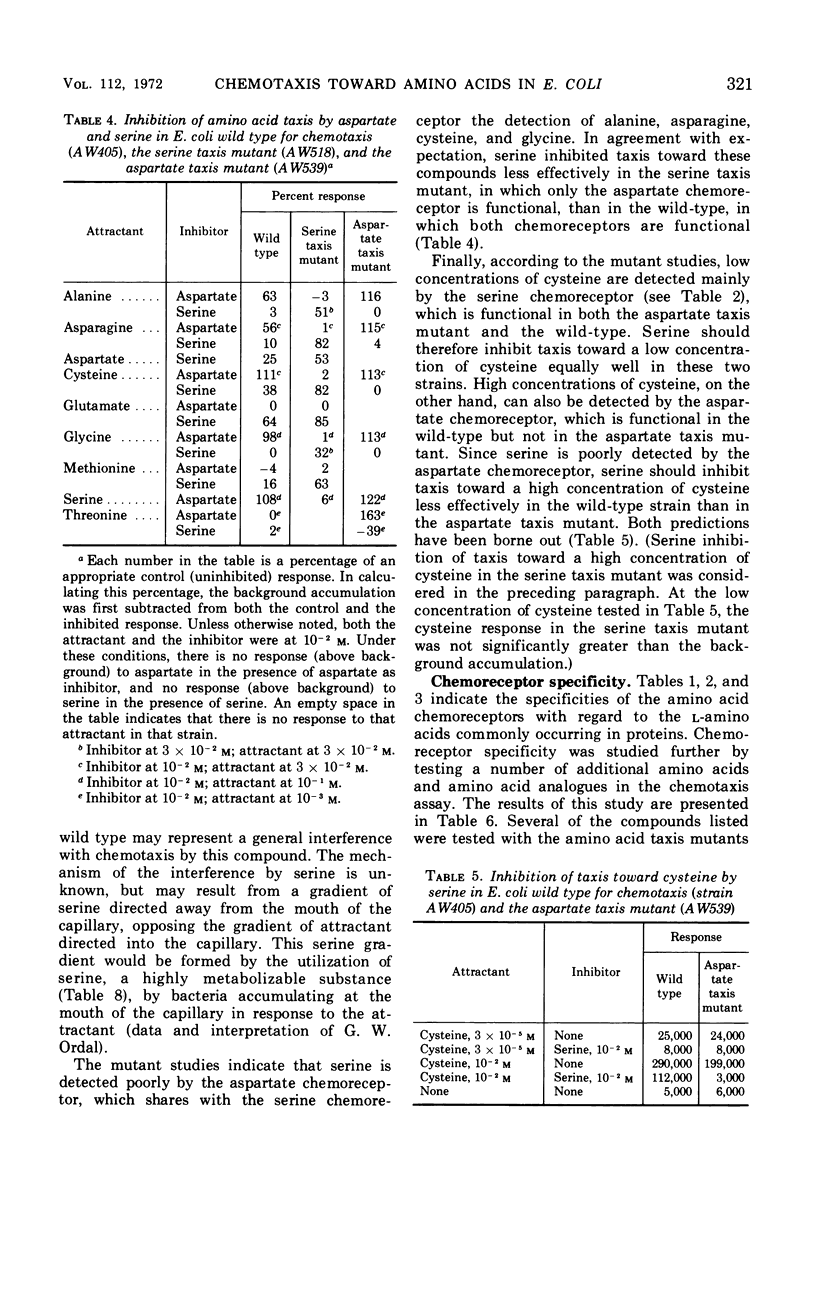
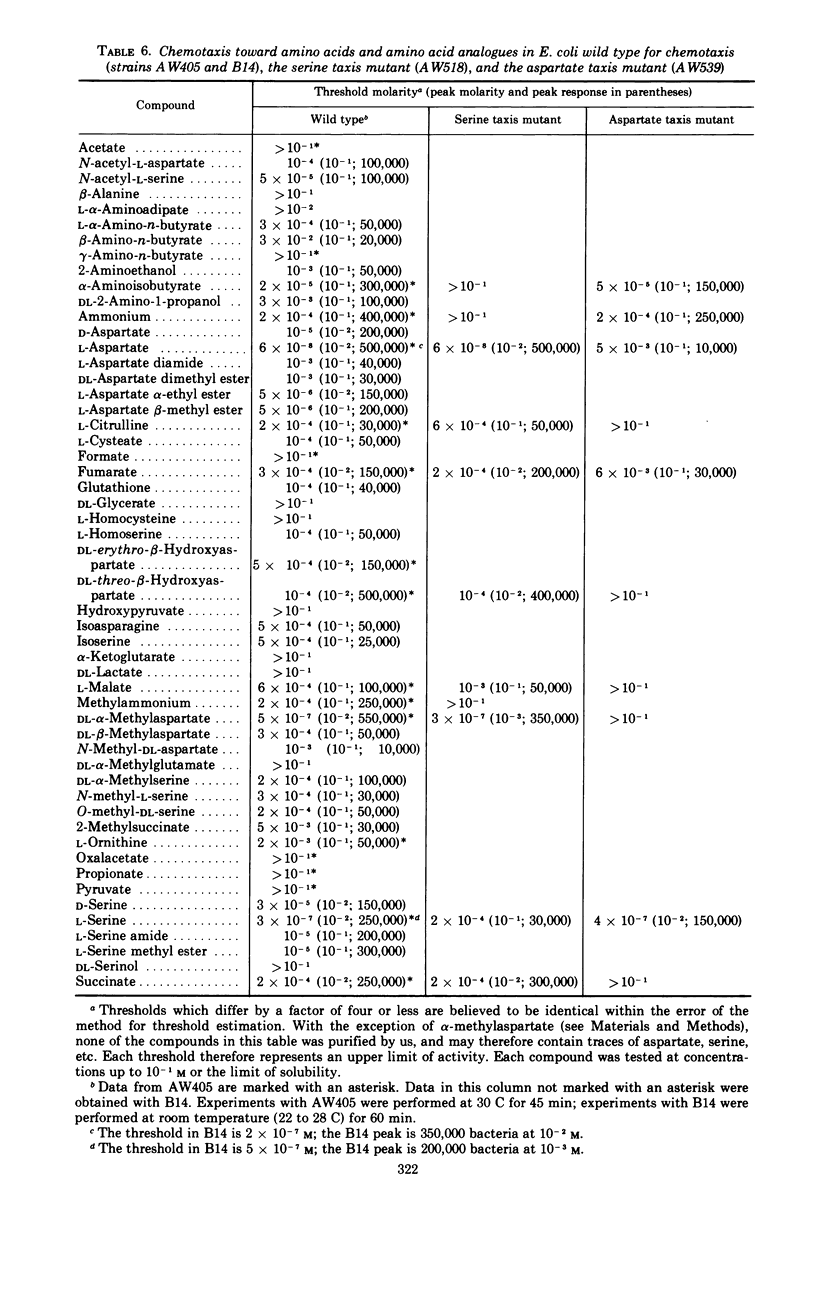
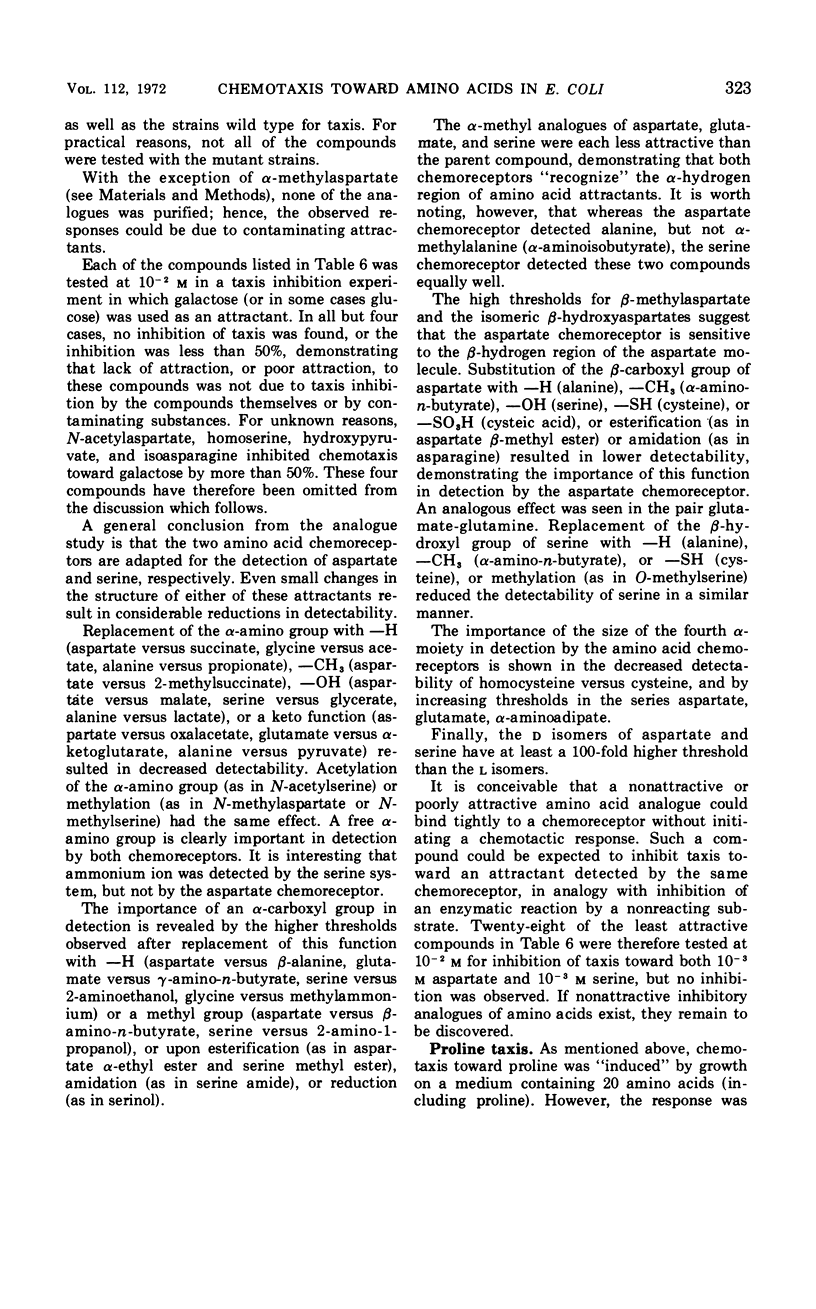

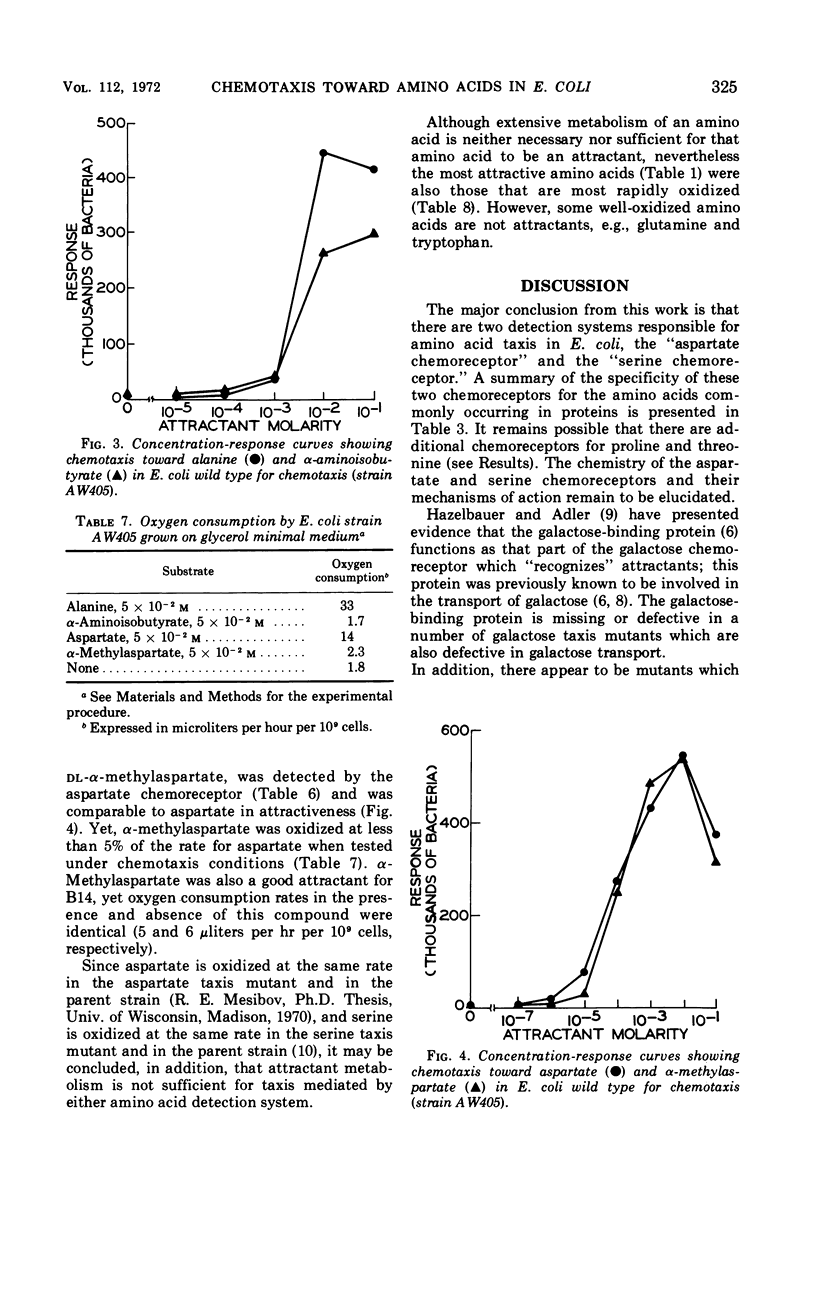
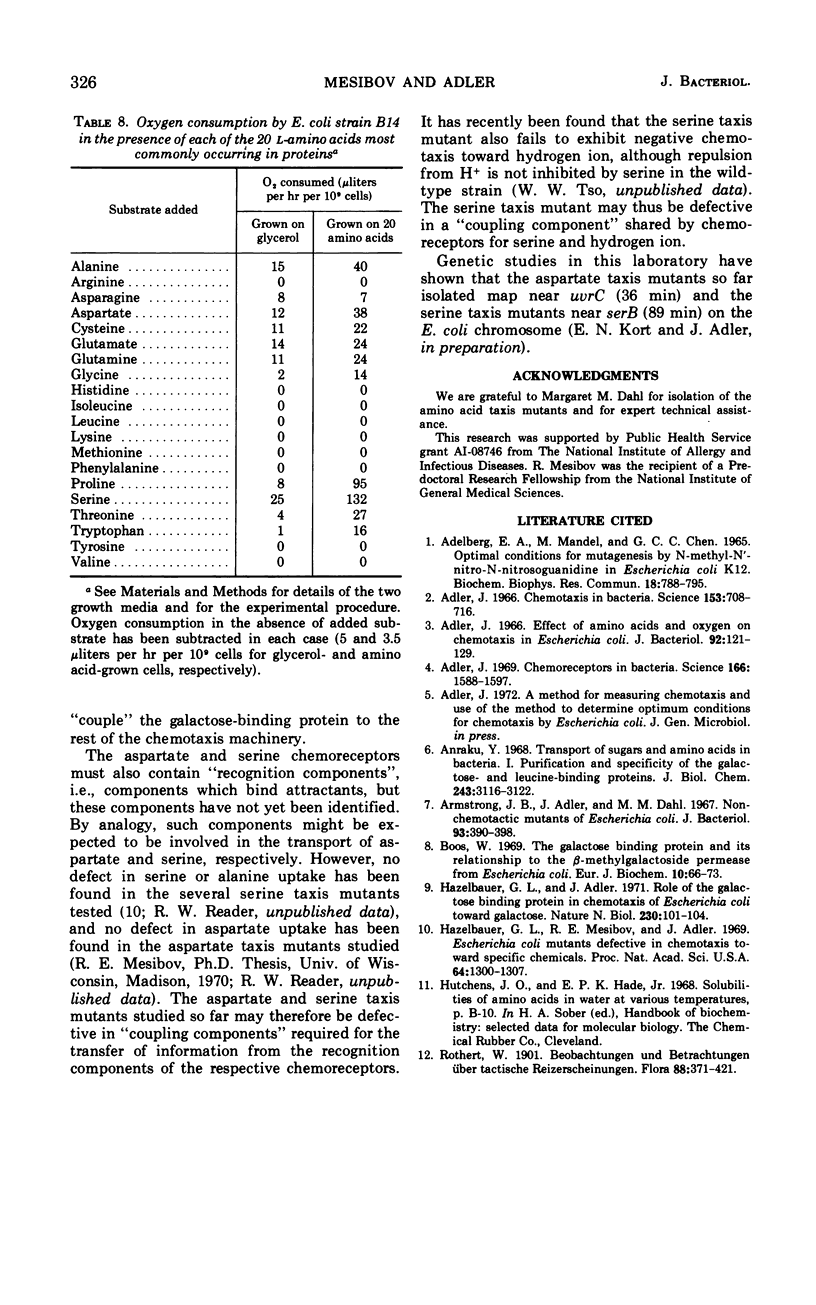
Selected References
These references are in PubMed. This may not be the complete list of references from this article.
- Adler J. Chemoreceptors in bacteria. Science. 1969 Dec 26;166(3913):1588–1597. doi: 10.1126/science.166.3913.1588. [DOI] [PubMed] [Google Scholar]
- Adler J. Chemotaxis in bacteria. Science. 1966 Aug 12;153(3737):708–716. doi: 10.1126/science.153.3737.708. [DOI] [PubMed] [Google Scholar]
- Adler J. Effect of amino acids and oxygen on chemotaxis in Escherichia coli. J Bacteriol. 1966 Jul;92(1):121–129. doi: 10.1128/jb.92.1.121-129.1966. [DOI] [PMC free article] [PubMed] [Google Scholar]
- Anraku Y. Transport of sugars and amino acids in bacteria. I. Purification and specificity of the galactose- and leucine-binding proteins. J Biol Chem. 1968 Jun 10;243(11):3116–3122. [PubMed] [Google Scholar]
- Armstrong J. B., Adler J., Dahl M. M. Nonchemotactic mutants of Escherichia coli. J Bacteriol. 1967 Jan;93(1):390–398. doi: 10.1128/jb.93.1.390-398.1967. [DOI] [PMC free article] [PubMed] [Google Scholar]
- Boos W. The galactose binding protein and its relationship to the beta-methylgalactoside permease from Escherichia coli. Eur J Biochem. 1969 Aug;10(1):66–73. doi: 10.1111/j.1432-1033.1969.tb00656.x. [DOI] [PubMed] [Google Scholar]
- Hazelbauer G. L., Adler J. Role of the galactose binding protein in chemotaxis of Escherichia coli toward galactose. Nat New Biol. 1971 Mar 24;230(12):101–104. doi: 10.1038/newbio230101a0. [DOI] [PubMed] [Google Scholar]
- Hazelbauer G. L., Mesibov R. E., Adler J. Escherichia coli mutants defective in chemotaxis toward specific chemicals. Proc Natl Acad Sci U S A. 1969 Dec;64(4):1300–1307. doi: 10.1073/pnas.64.4.1300. [DOI] [PMC free article] [PubMed] [Google Scholar]


